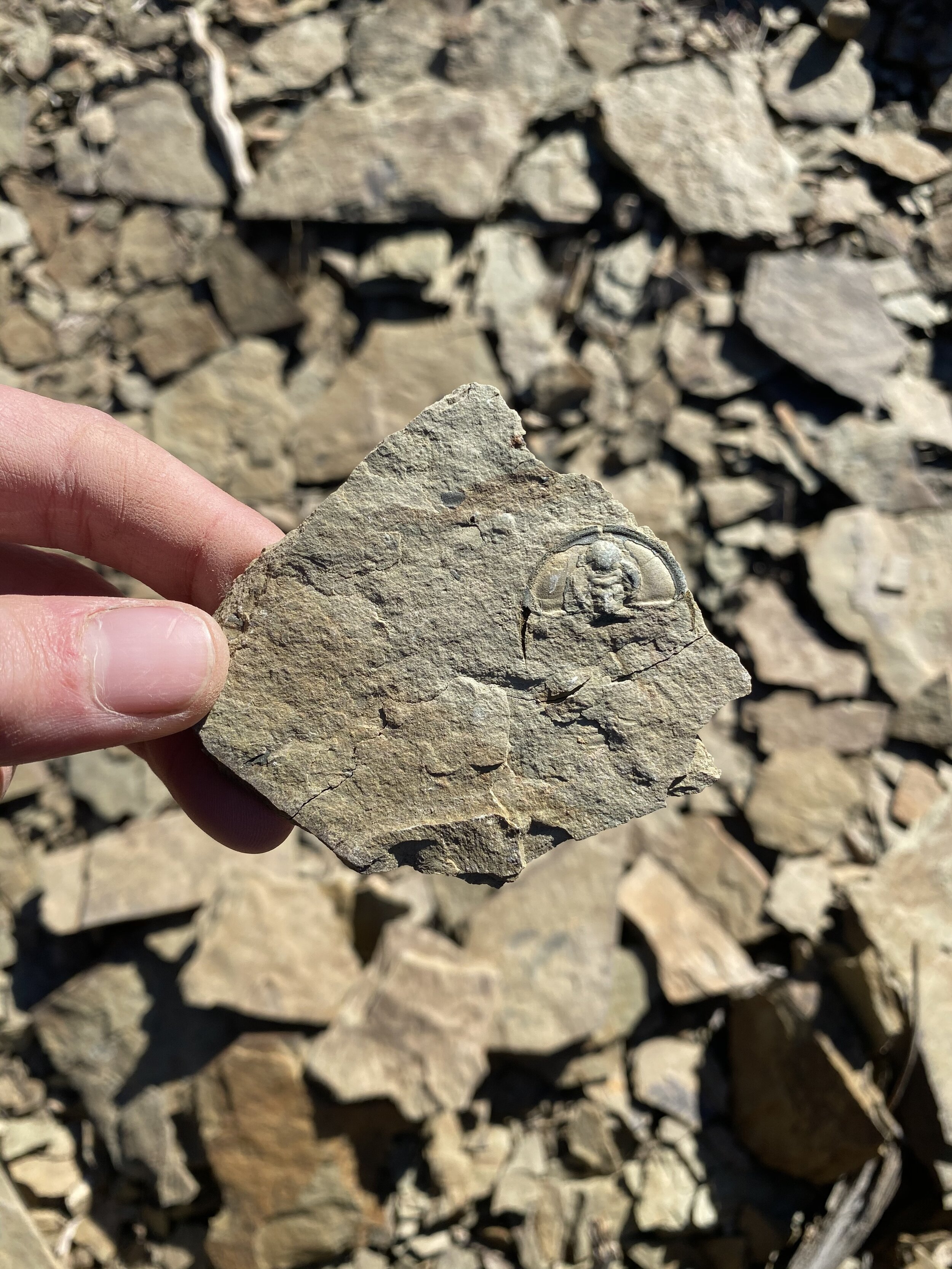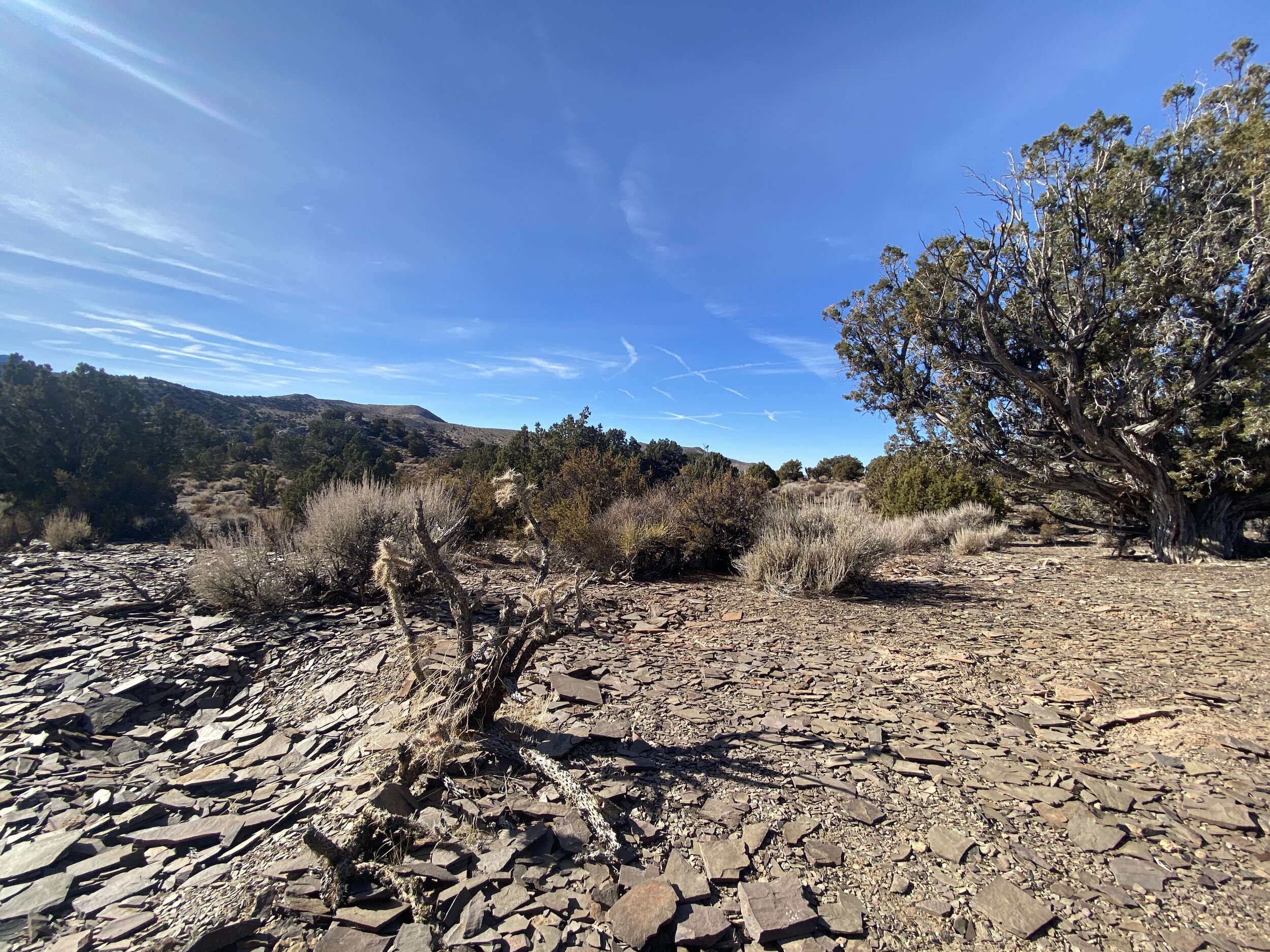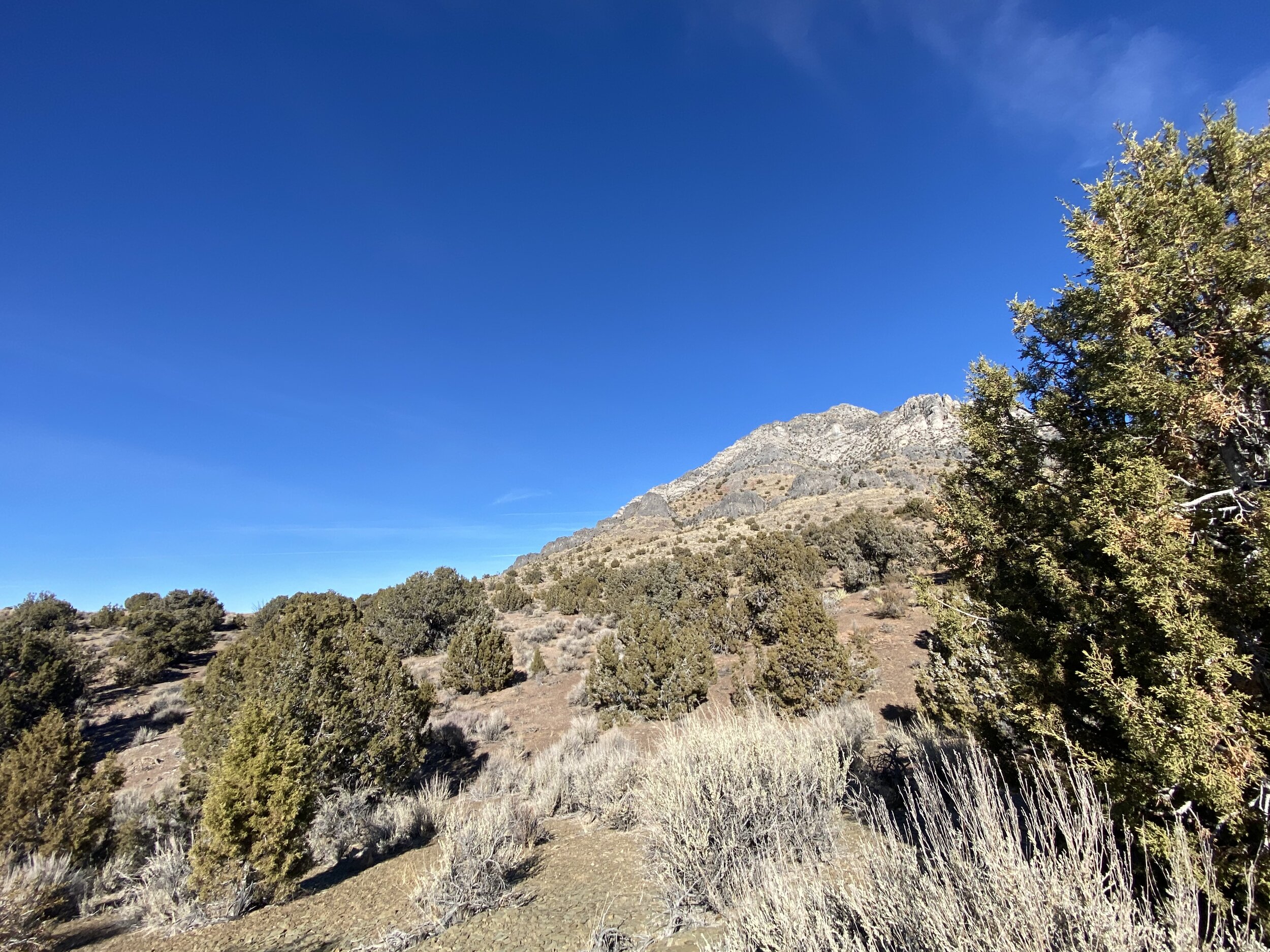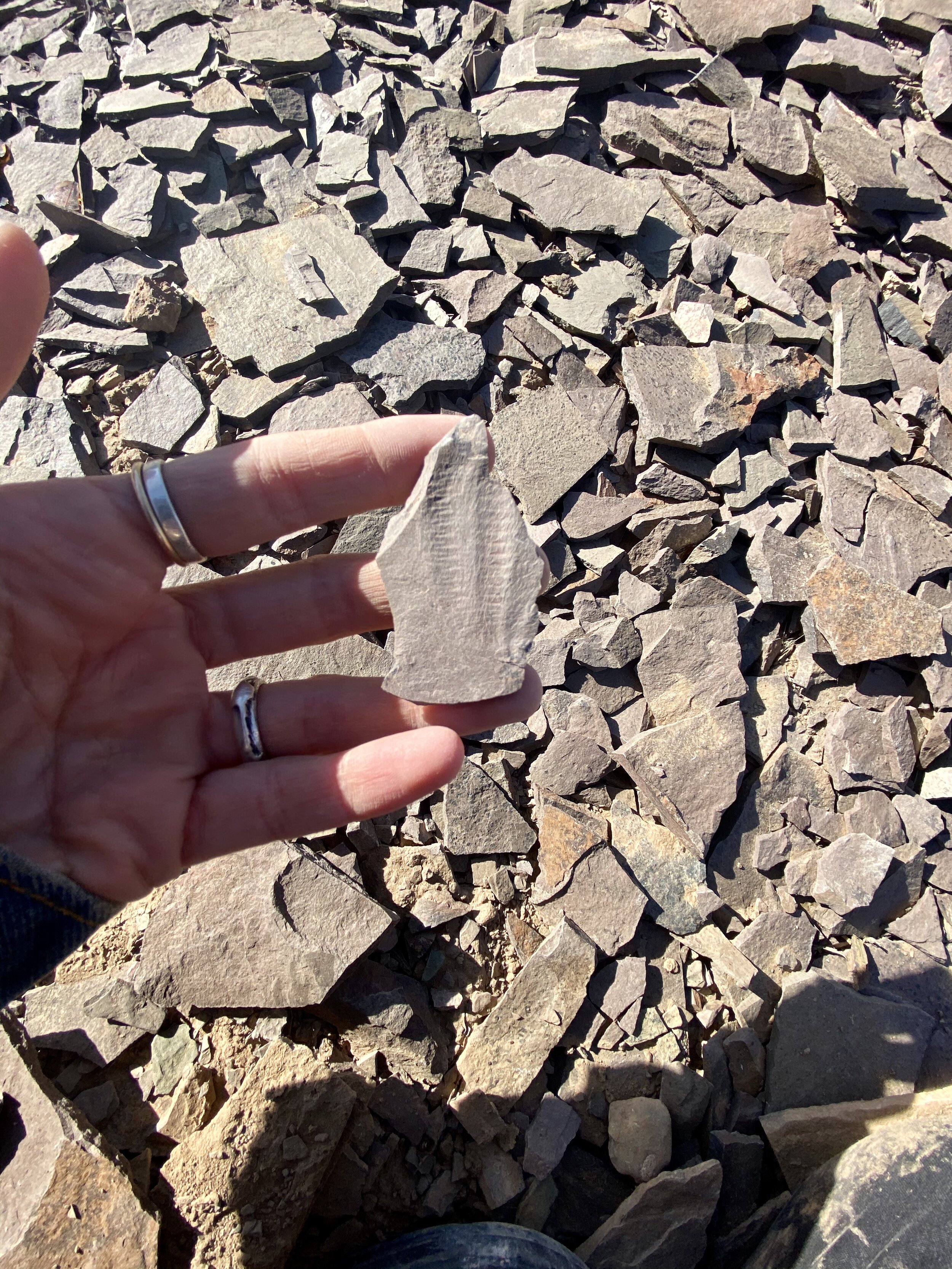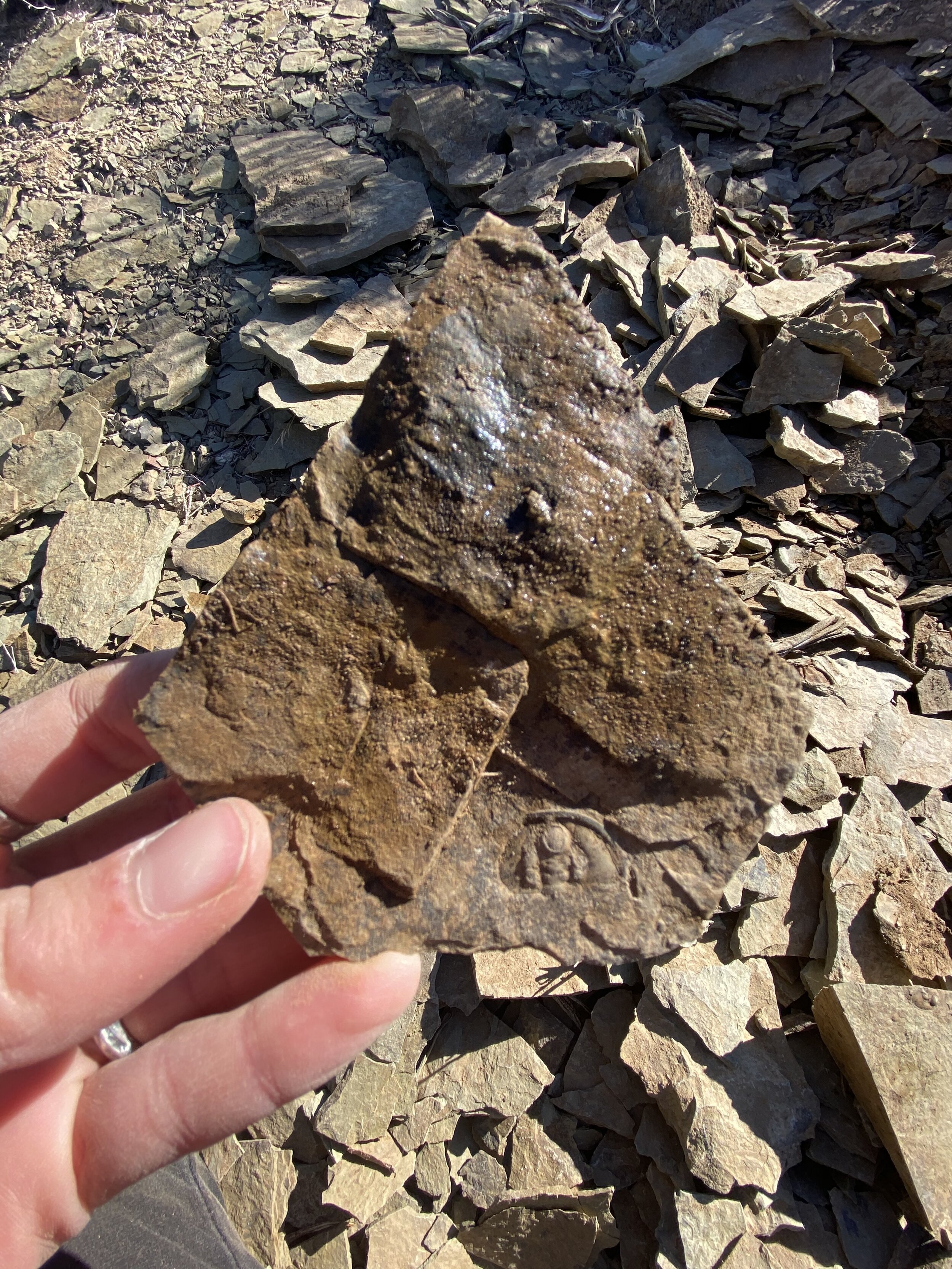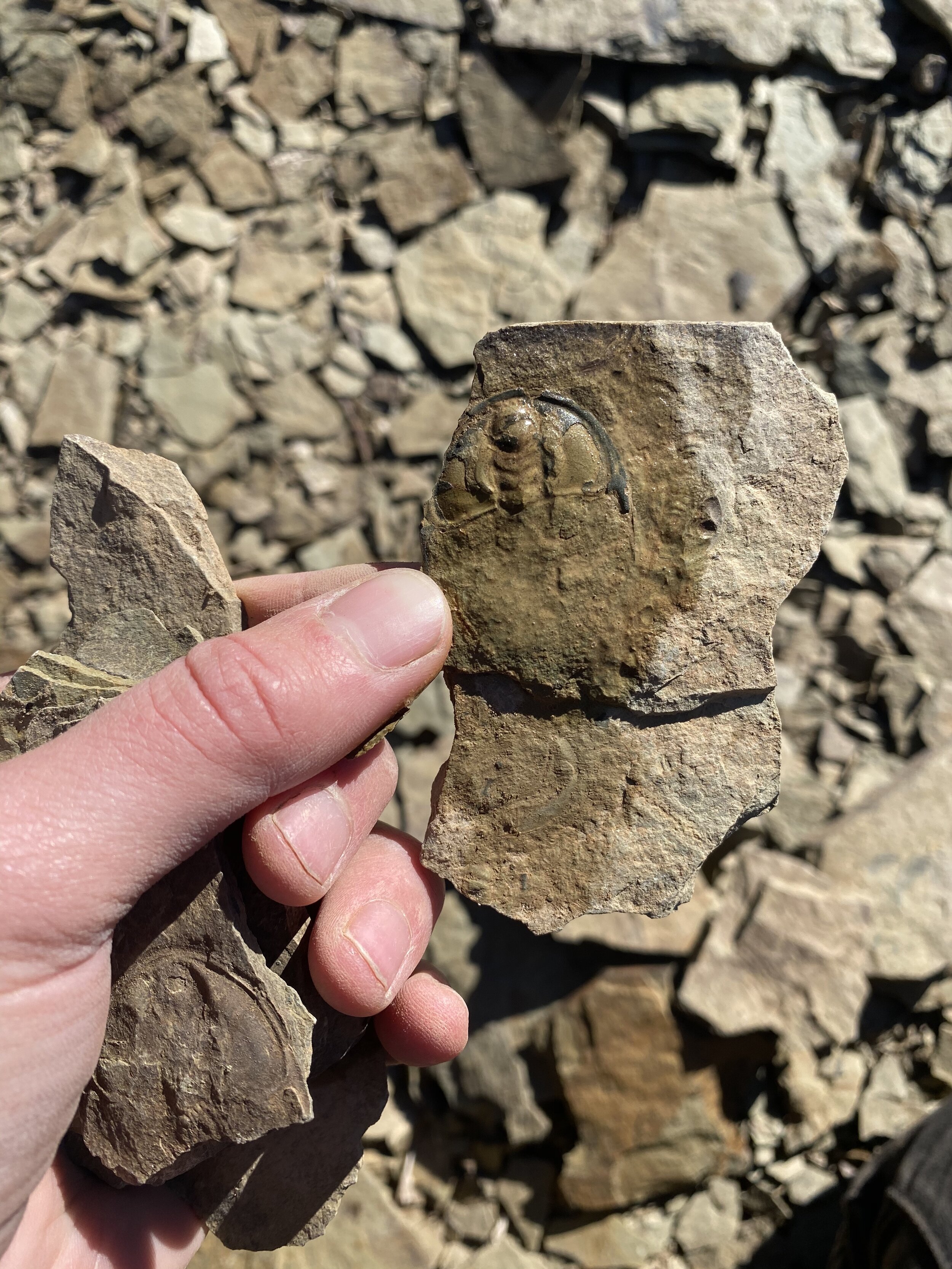trilobites in southeastern nevada
finding fossils in nevada!
where were we ‘hounding? in south eastern nevada, there is a hill, (well, many hills) that preserved a warm shallow sea that was reality around 520 million years ago. here six layers of sediment settled. around 15 million years ago, volcanic activity, earthquakes, wind and water shaped and re-exposed these layers, giving way to the shale where these little guys got caught in the then muddy murky waters, awaiting their extinction. add heat, pressure, and time, and here you have a hill full of this preserved scaly little creature.
what are trilobites?
hard shelled, sea dwelling creatures. they existed in ancient seas that covered areas of north america around 530 million years ago, but this specific species at the site is believed to be the oldest known to the land - around 500 million years old. belonging to the Olenellidae family, six types of fossil remains are located in the shale deposits here.
usually when mister trilobite dies, the shell separates from the body. the body consists of the head (cephalon) a thorax with a variable number of segments, and a tail (pygidium). when searching you can often find the heads, tails, or thorax, but its often hard to find a fully preserved specimen.
around 520 million years ago, the olenellidae family abruptly disappeared. scientists guess that the warm shallow and highly oxygenated waters were disrupted. potentially the strike of a meteorite… the sea changed, becoming cold and oxygen poor. many species at this time became extinct. however, some tribolite families survived onwards of 100 million more years.
after searching for well over an hour or more through the tailings of others’ diggins, i had feeling about a certain hill that was just glistening in the right light to catch my eye. up here, a lot of shale was exposed. and i hit the jackpot, as this is was a mass trilobite grave. bummer for the little guys.
disclaimer. on my hounding journeys i refrain from giving the exact locality of the area, but give enough clues, that with any amount of research, you could more than likely find the area. if you have any questions or want to know more about said place, let me know! if you happen to go out, always follow leave no trace practices, as well as the BLM’s guidelines to collecting and harvesting fossils or rocks in the given area.
sources: The Editors of Encyclopaedia Britannica. (2018, October 18). Trilobite. Retrieved from https://www.britannica.com/animal/trilobite

